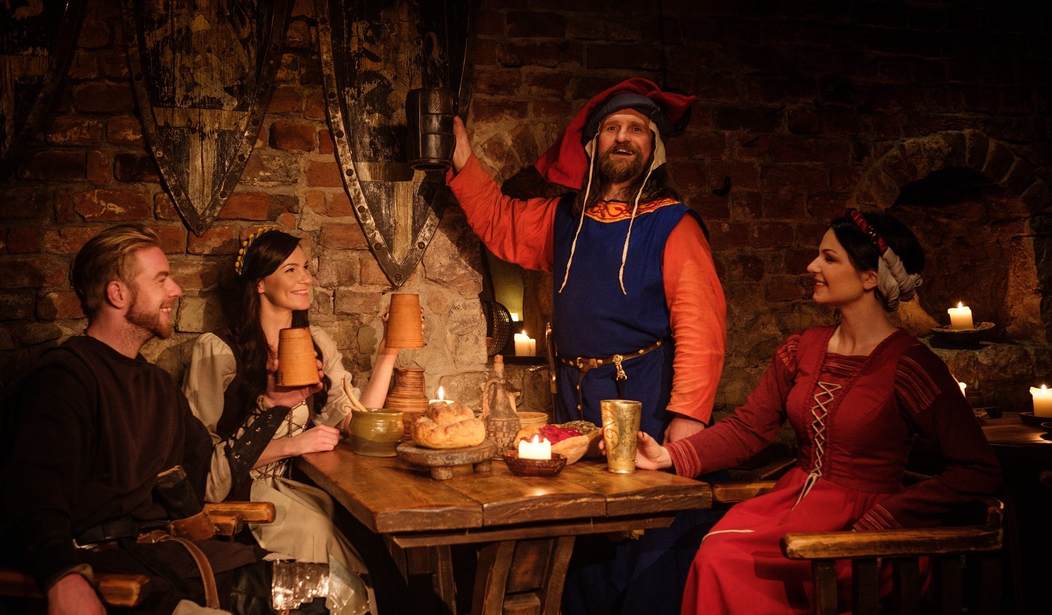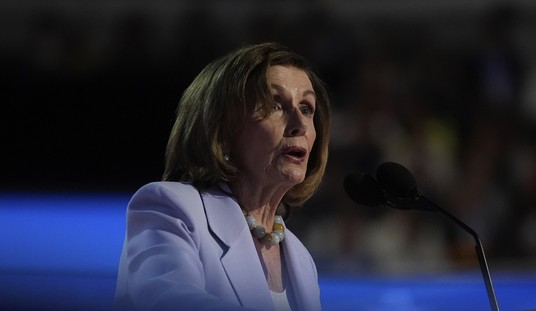You think you have it bad today? Think about life over 700 years ago and stop the doom and gloom, please. I hear the predictions of utter disaster from my friends on both the political Right and Left. Many on the Left believe that President Trump is the modern incarnation of Adolf Hitler, and Americans will starve to death (without any healthcare no doubt!) in the streets if more Republicans are elected.
My friends on the Right believe all hope is lost if the Republicans lose the House or Senate (or both) this fall. This Tuesday, I heard Ann Coulter on Rush Limbaugh’s radio show (I am an avid listener) actually say that if the House is lost to the Democrats then all hope dies. Really? All hope is DEAD at that point?
My gosh, people, where is your faith in God? I’ve read on Facebook where some of my friends have whined “we’re doomed” because of the nefarious “Deep State.” I believe the Deep State does exist and is a serious problem for our liberty, but….we’re doomed? Since when? As a pastor I have to ask people, “Is God really God or is He just applying for the job?”
Can we all just take a step back for a minute and get some historical perspective? How about if we look at one little “snapshot” of history — let’s say the 14th century — and realize that if the good Lord got us through that awful century, I’m pretty sure He’ll get us through whatever happens in the fall of 2018 — and succeeding years too. So, what was the 14th century like? Consider these 4 “wonderful” events:
1. The “Little Ice Age.”
There was a “Little Ice Age” and massive crop failure. The earth had been going through quite a warming trend for about 300 years. Historians and climatologists today call the era the “Medieval Warm Period.” It lasted from about A.D. 950 to about A.D. 1300. It was during this time of global warming that the Vikings explored and/or colonized Greenland, Iceland, and the tips of North America (Canada and what is now New England). Maybe the earth had heated up because of all the carbon emissions from all those outboard motors and Harley Davidsons the Vikings liked to scoot around in.
Around the year 1300 however, the temperature began to level off and northern Europe experienced a cooling spell often called “Little Ice Age.” This cooling trend lasted until about the mid-19th century! Because of the plunge in temperatures, Europe experienced the Great Famine of 1315-1317.
This famine killed millions of people across the continent. Europe continued to experience difficulty in growing and harvesting food throughout that century due to the change in weather, as well as the decimation of the population from the Bubonic Plague. In 1318, a plague killed off many of the sheep and cattle (it was probably anthrax).
Famines and plagues killed off so many people that it took Europe about 150 years to regain the population levels of the year 1300.
2. Islamic armies invaded Europe.
Islamic armies had invaded western Europe in the 8th century and fortunately they were turned back by the Frankish king Charles Martel at the Battle of Tours (A.D. 732). However, Islam remained dominant over much of the Iberian Peninsula (Spain and Portugal) for centuries.
While Catholic armies were trying to reconquer the Iberian peninsula, the Ottoman Turkish Empire on the eastern side of Europe was pounding on the doors of Constantinople. This city was the last remaining vestige of the ancient Roman Empire. The Turks had all but surrounded this outpost of Christianity by the beginning of the 14th century. In 1453, the Turks finally conquered the city, renamed it Istanbul, and continued their march through eastern Europe to Vienna, Austria.
We have to remember that from the 14th century to the 17th century, the Christian powers of Europe were not only fighting amongst themselves, but they were also fighting the massive threat of the Turkish Empire. It was certainly doubtful at times if Christendom would prevail. It was not until the Siege of Vienna (1529) and the Battle of Lepanto (1571) that Europe saw hope in its struggle to throw off Islamic conquest. Finally, in the Battle of Vienna (1683), a European confederation under the leadership of the Polish King Jan Sobieski III broke the back of the Turkish army and saved civilization.
Here is a clip from a movie showing the spectacular final charge of the Polish cavalry as they crush the Islamic army and save Europe:
3. The Bubonic Plague killed millions.
This is the single greatest “natural” disaster to have hit planet earth in recorded history. Europe and Asia had experienced various and sundry plagues over the past millennia, but nothing was as mysterious, frightening, and devastating as the “Black Death” that struck mankind in the 14th century.
The Bubonic Plague had been wiping out people in Asia, arriving in Crimea by 1343. The disease had already killed about 25 million people in the Mongol Empire before it arrived in Eastern Europe. In 1347 it made its appearance in western Europe. Rats from a ship in Sicily came onto the island, and the fleas carrying the disease jumped from the rats to the human population.
Within the next six years, the plague killed off an estimated 75 million to 200 million people. Historians estimate that half of Europe’s population was wiped out.
We cannot overestimate the incredible blow to Europe’s economy and psyche. The people of Europe (as well as Asia and the Middle East) did not know what was causing this sudden death, and they did not know how to stop it. Whole towns were simply killed off; there was no one left to bury the dead or to harvest the crops. We can laugh at that scene in Monty Python where a guy yells “Bring out yer dead!” but in 1350, it was no joke.
4. Both the church and state were corrupt and tyrannical.
If you were looking for political or religious freedom in medieval Europe (or anywhere else in the world for that matter) you were pretty much out of luck. The Republic of Venice, which elected its own rulers, was the freest nation in Europe for centuries. Almost everyone else, however, knew nothing of the amazing political and religious freedoms most Americans have been enjoying for centuries.
True, the Magna Carta was signed in 1215, but that did not guarantee by a long shot the kind of Constitutional rights we know and love today.
The Church was divided and subdivided into numerous conflicting powerful entities. The western Latin (Roman Catholic) church and the eastern Greek (Orthodox) church had squabbled against each other for centuries, finally excommunicating each other in 1054.
In the 14th century, the Roman Catholic Church experienced the “Western Schism” or “Papal Schism” (1378-1417) in which two men (and since 1410, three men!) all claimed to be the legitimate pope.
Imagine living back then, believing that your salvation hinged in part upon your fealty to the legitimate descendant of St. Peter. Then, you don’t have one pope as the Vicar of Christ — you have two or three all damning each other to hell and back. Which one is legitimate? If you’re on the wrong side, is your hope of eternal life jeopardized? This was no laughing matter to the people of that era, most of whom took their faith very seriously.
And on top of all this, the Church had been infiltrated for centuries with power-hungry frauds (much like what infiltrates us today in the form of con-artist televangelists and pedophile priests). Thank God there were faithful men and women of integrity and industry who truly helped their fellow man, but it’s easy to remember the power hungry and oftentimes immoral people at the top. It’s easy to forget the pious people at the bottom who faithfully lived out the truth of God in spite of the corruption around them.
In all of this chaos and starvation and pestilence and bloodshed and trampling of other human beings, somehow the human race survived. Europeans made it into the 15th century. They experienced a Renaissance and a Reformation.
Western civilization later experienced a new birth of freedom in the 18th century. The human race made it through the Great Depression and World War II and the Cold War.
I am no Pollyanna, blissfully thinking “glad thoughts” and wishing away all the serious issues we face. I know our Republic faces grave threats. I seriously pray about them, and work on a number of fronts to effectively deal with them. But we are far, far from being doomed.
In fact, my Bible tells me that we are never doomed. There is always hope. We’re going to make it through the fall of 2018, folks. Look at history as a guide … and look up with your faith.









Join the conversation as a VIP Member